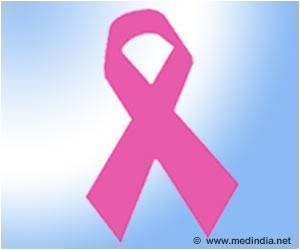Immunotherapy in early breast cancer indicated an improvement in event-free survival, revealed study.

‘Triple negative breast cancer is the most aggressive subtype of breast cancer and more often affects young women.’





Patients typically receive chemotherapy, followed by surgery to remove the tumour. This provides the best chance of pathological complete response, meaning no cancerous cells remaining on the resected tumour. Women with a pathological complete response have an 85-90% likelihood of being cured, while those with residual viable tumour tissue have a 40-50% probability of recurrence, which often occurs within three years. KEYNOTE-522 tested whether adding immune therapy to chemotherapy prior to surgery could improve pathological complete response and event-free survival in women with early triple negative breast cancer. A total of 1,174 patients were randomly allocated at a 2:1 ratio to pembrolizumab or placebo, both added to preoperative chemotherapy with anthracyclines, taxanes, and platinum, for five to six months. After surgery, patients continued their allocated treatment of pembrolizumab or placebo for nine cycles.
The analysis presented at the ESMO Congress 2019 was performed after a median follow-up of 15.5 months. Pathological complete response, assessed in the first 602 patients, significantly increased from 51.2% (95% confidence interval [CI] 44.1-58.3) in the placebo group to 64.8% (95% CI 59.9-69.5) in the pembrolizumab group (p=0.00055). "We found a 13.6% difference which is a clinically meaningful benefit," said Schmid.
Because triple negative breast cancer is aggressive and recurrences often occur early on, the investigators conducted an interim analysis of event-free survival. There was a favourable trend for the pembrolizumab group with a hazard ratio of 0.63 (95% CI 0.43-0.93), Schmid said: "These are preliminary data, but they provide a strong sign that the addition of immune therapy to neoadjuvant chemotherapy prevents breast cancer recurrence. If we prevent recurrence, we cure more patients, but we need longer-term data for confirmation."
Grade 3 or higher treatment-related adverse events occurred in 78.0% and 73.0% of the pembrolizumab and placebo groups, respectively. Schmid noted that many of the side-effects were driven by the intensive chemotherapy regimen. Side-effects with a potential link to immune therapy occurred in 42% of study participants taking pembrolizumab versus 21% on placebo. "Immune therapy added some side-effects to chemotherapy but there were no new safety signals," he said. Commenting on the results for ESMO, Prof Fabrice Andre, Institut Gustave Roussy, Villejuif, France, said: "Triple negative breast cancer accounts for 15% of breast cancers. It represents an unmet medical need, since the only approved medical therapy at early stages of the disease is chemotherapy. This study could have a major impact on treatment for these patients."
Advertisement
While a large benefit in response rates was expected, the poor predictive value of PD-L1 was surprising. "This is probably because most early stage triple negative breast cancers express some degree of PD-L1, sometimes below the predefined cut-off of positivity. The role of chemotherapy as a sensitiser for anti-PD-1 in PD-L1-low early stage triple negative breast cancer should also be explored," said Andre. "The next step will be to define which patients are resistant and prioritise which targets should be hit in this population. We also have to determine the impact of this new class of drug on survivorship issues."
Advertisement















